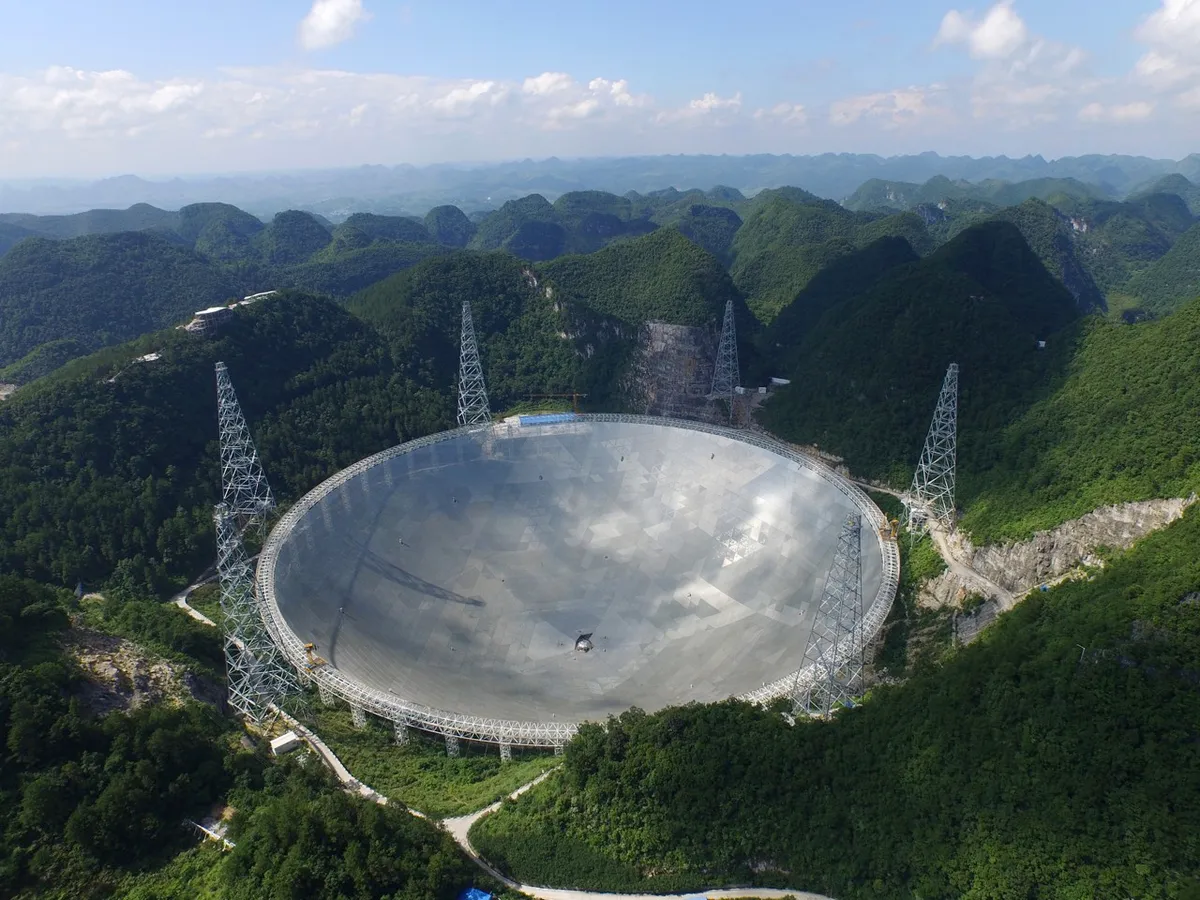When you’re looking towards the stars, bigger is often better, especially when it comes to building telescopes, and after five years of construction the Chinese Academy of Sciences has announced the completion of the largest in the world – the Five-hundred-meter Aperture Spherical Telescope (FAST).
The telescope’s 4,450 reflecting panels give it an aperture of (unsurprisingly given its name) 500 metres, far eclipsing the previous biggest, the Arecibo Observatory in Puerto Rico, by nearly 200 metres, and covers an area equivalent to 30 football pitches. This will make it significantly more sensitive when it comes to searching the celestial skies once the three-year phase of testing and debugging is complete.
“Once completed, FAST will lead the world for at least 10 to 20 years,” says Yan Jun, director general of the telescope’s designer, builder and owner, the National Astronomical Observatories of China (NAOC) under CAS.
Although designed, developed and constructed entirely by Chinese scientists, the often secretive nation will open up the telescope to the international community and allocate time to scientists from around the world, giving astronomers a powerful tool in the search for new galaxies, pulsars, interstellar communication and answers to a whole host of other stellar questions.
Speaking to BBC News, Prof Simon Garrington, associate director for Jodrell Bank Observatory, says the telescope will be a “huge boost” to the world’s network of telescopes.
"It's a hugely ambitious project, and it's been carried out very efficiently. It's probably come on stream faster than any of us would have expected for such a complex project."

The FAST project began back in 1994, and took ten years to find the perfect spot, deep in Guizhou Province, famed for it karst land formations which provide a natural defence against radio interference. The £140m construction project began in 2011 before the last panel was installed on 3 July 2016, marking the end of major construction work. The telescope will now begin testing and debugging, as well as conducting limited experiments before it is finally fully operational.
Follow Science Focus onTwitter,Facebook, Instagramand Flipboard
